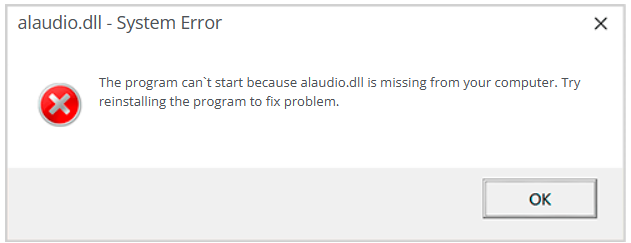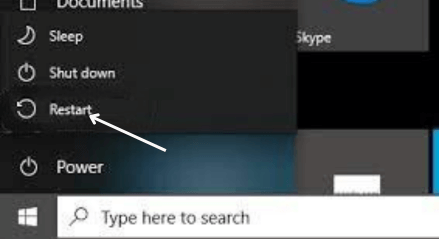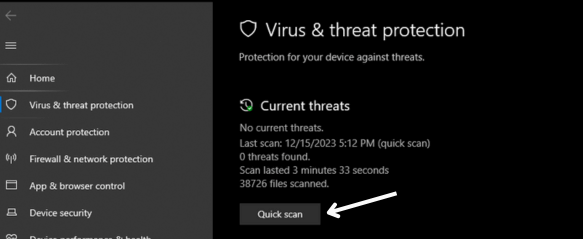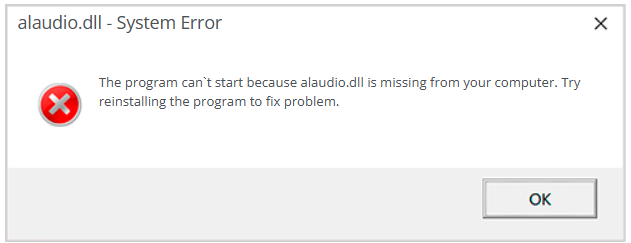When you come across an error message related to “alaudio.dll” on your computer, rest assured that you are not the only one facing this issue. The mentioned DLL file is a crucial part of the OpenAL audio library, which is widely used by many PC games and applications. The file getting corrupted or deleted can lead to a range of issues including audio malfunctions and system crashes.
Scan Your PC for Issues Now
It’s important to note that downloading DLL files from third-party websites or using third-party tools to fix DLL errors is not recommended. These files can be outdated or even malicious, and installing them can cause further damage to your system. Instead, it’s best to use a trusted PC cleaner and registry cleaner like SpyZooka to fix DLL errors for free.
If you’re wondering which program installed the alaudio.dll file on your PC, it’s likely a game or application that uses the OpenAL audio library. This library provides developers with a standard way to add 3D audio to their software, and it’s used by many popular games like Minecraft, Half-Life 2, and Portal.
Table of Contents
ToggleWhat is alaudio.dll
If you are experiencing issues with your computer and you are not sure what is causing them, you may come across the alaudio.dll file. This file is a component of the ALAudio Device Driver and is used for audio processing.
Common Error Messages

Some common error messages related to the alaudio.dll file include:
- “Alaudio.dll not found.”
- “This application failed to start because alaudio.dll was not found. Re-installing the application may fix this problem.”
- “Cannot find [PATH]alaudio.dll.”
- “The file alaudio.dll is missing.”
- “Cannot start [APPLICATION]. A required component is missing: alaudio.dll. Please install [APPLICATION] again.”
What causes a alaudio.dll error message?
There are several reasons why you may encounter an error message related to the alaudio.dll file. Some of the most common causes include:
- Corrupted or damaged system files
- Malware or virus infections
- Outdated drivers or software
- Hardware failure
Is alaudio.dll safe or harmful?
The alaudio.dll file itself is not harmful, as it is a legitimate component of the ALAudio Device Driver. However, if the file is corrupted or infected with malware, it can cause issues with your computer.
To ensure that your computer is protected, it is important to keep your antivirus software up-to-date and to run regular malware scans. Additionally, you should keep your drivers and software updated to ensure that any known vulnerabilities are patched.
How to Solve alaudio.dll Error Messages
If you’re experiencing alaudio.dll error messages, there are a few steps you can take to resolve the issue. Here are some potential solutions:
1. Download SpyZooka
SpyZooka is a free tool that can help you fix issues related to alaudio.dll. It offers a registry cleaner that can remove outdated entries that may be causing the error messages. Additionally, SpyZooka’s Malware AI can detect both known and unknown spyware, which can be the cause of DLL errors. Downloading SpyZooka is free, and there is no cost to fix all the issues found by the tool.
2. Restart Your PC

Sometimes, restarting your computer can help solve issues related to DLL error messages. This is because restarting can help clear out any temporary files or processes that may be causing the issue.
3. Run a Full Antivirus Scan

DLL errors can sometimes be caused by malware or viruses on your computer. Running a full antivirus scan can help detect and remove any threats that may be causing the issue. SpyZooka’s Malware AI can also detect and remove these threats.
4. Run Windows System File Checker and DISM
Windows System File Checker and DISM are built-in tools in Windows that can help resolve DLL errors in the operating system. Running these tools can help detect and repair any corrupted system files that may be causing the issue.
5. Update Your Drivers
Outdated drivers can sometimes be the cause of DLL errors. Checking that all your drivers are up to date with SpyZooka is another option to help solve DLL errors.
6. Reinstall the Program
If all else fails, you may need to uninstall and reinstall the program that is causing the DLL error. This can help reinstall the correct DLL and resolve the issue.
